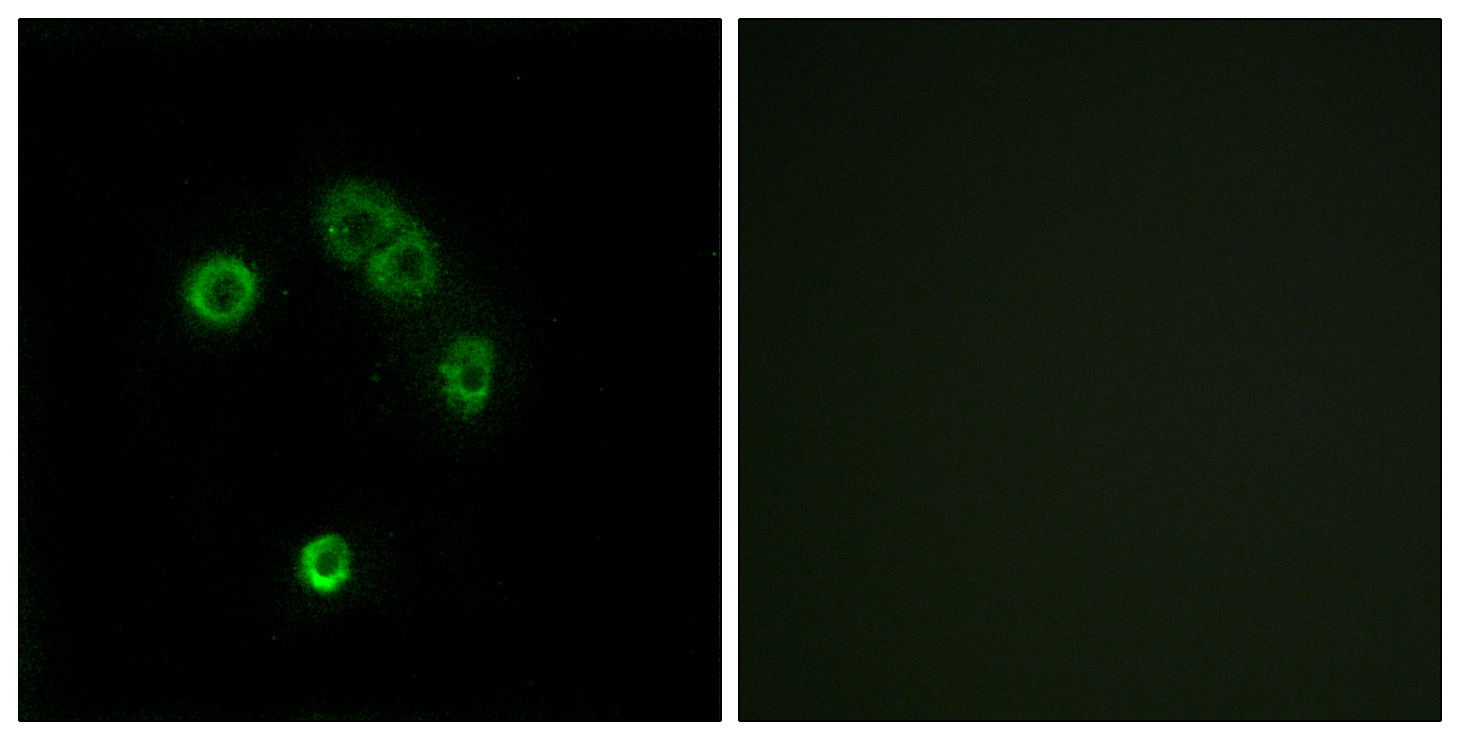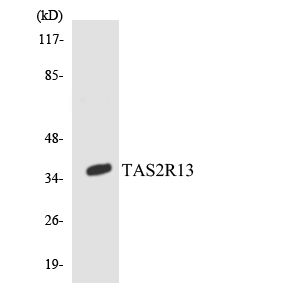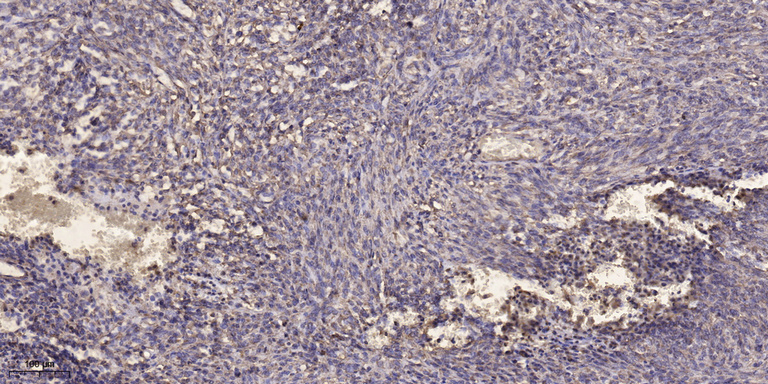T2R13 Polyclonal Antibody
- Catalog No.:YT4505
- Applications:WB;ELISA;IHC
- Reactivity:Human;Rat;Mouse;
- Target:
- T2R13
- Fields:
- >>Taste transduction
- Gene Name:
- TAS2R13
- Protein Name:
- Taste receptor type 2 member 13
- Human Gene Id:
- 50838
- Human Swiss Prot No:
- Q9NYV9
- Mouse Swiss Prot No:
- Q7M720
- Immunogen:
- The antiserum was produced against synthesized peptide derived from human TAS2R13. AA range:123-172
- Specificity:
- T2R13 Polyclonal Antibody detects endogenous levels of T2R13 protein.
- Formulation:
- Liquid in PBS containing 50% glycerol, 0.5% BSA and 0.02% sodium azide.
- Source:
- Polyclonal, Rabbit,IgG
- Dilution:
- WB 1:500-2000;IHC 1:50-300; ELISA 2000-20000
- Purification:
- The antibody was affinity-purified from rabbit antiserum by affinity-chromatography using epitope-specific immunogen.
- Concentration:
- 1 mg/ml
- Storage Stability:
- -15°C to -25°C/1 year(Do not lower than -25°C)
- Other Name:
- TAS2R13;Taste receptor type 2 member 13;T2R13;Taste receptor family B member 3;TRB3
- Observed Band(KD):
- 35kD
- Background:
- This gene product belongs to the family of candidate taste receptors that are members of the G-protein-coupled receptor superfamily. These proteins are specifically expressed in the taste receptor cells of the tongue and palate epithelia. They are organized in the genome in clusters and are genetically linked to loci that influence bitter perception in mice and humans. In functional expression studies, they respond to bitter tastants. This gene maps to the taste receptor gene cluster on chromosome 12p13. [provided by RefSeq, Jul 2008],
- Function:
- function:Receptor that may play a role in the perception of bitterness and is gustducin-linked. May play a role in sensing the chemical composition of the gastrointestinal content. The activity of this receptor may stimulate alpha gustducin, mediate PLC-beta-2 activation and lead to the gating of TRPM5.,miscellaneous:Most taste cells may be activated by a limited number of bitter compounds; individual taste cells can discriminate among bitter stimuli.,similarity:Belongs to the G-protein coupled receptor T2R family.,tissue specificity:Expressed in subsets of taste receptor cells of the tongue and palate epithelium and exclusively in gustducin-positive cells.,
- Subcellular Location:
- Membrane; Multi-pass membrane protein.
- Expression:
- Expressed in subsets of taste receptor cells of the tongue and palate epithelium and exclusively in gustducin-positive cells.
- June 19-2018
- WESTERN IMMUNOBLOTTING PROTOCOL
- June 19-2018
- IMMUNOHISTOCHEMISTRY-PARAFFIN PROTOCOL
- June 19-2018
- IMMUNOFLUORESCENCE PROTOCOL
- September 08-2020
- FLOW-CYTOMEYRT-PROTOCOL
- May 20-2022
- Cell-Based ELISA│解您多样本WB检测之困扰
- July 13-2018
- CELL-BASED-ELISA-PROTOCOL-FOR-ACETYL-PROTEIN
- July 13-2018
- CELL-BASED-ELISA-PROTOCOL-FOR-PHOSPHO-PROTEIN
- July 13-2018
- Antibody-FAQs
- Products Images

- Immunofluorescence analysis of MCF7 cells, using TAS2R13 Antibody. The picture on the right is blocked with the synthesized peptide.

- Western blot analysis of lysates from Jurkat cells, using TAS2R13 Antibody. The lane on the right is blocked with the synthesized peptide.

- Western blot analysis of the lysates from COLO205 cells using TAS2R13 antibody.

- Immunohistochemical analysis of paraffin-embedded human Colon cancer. 1, Antibody was diluted at 1:200(4° overnight). 2, Tris-EDTA,pH9.0 was used for antigen retrieval. 3,Secondary antibody was diluted at 1:200(room temperature, 45min).



